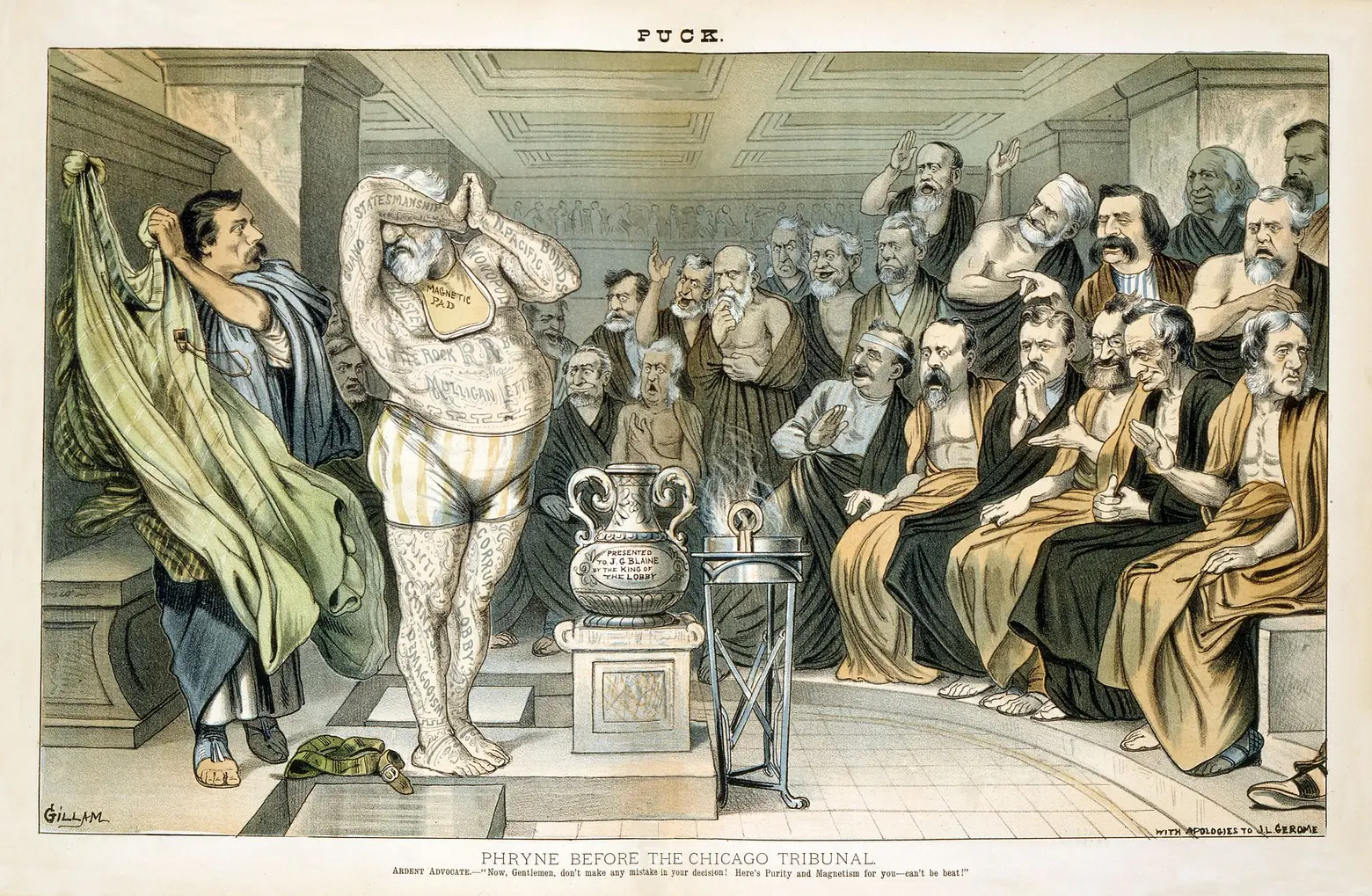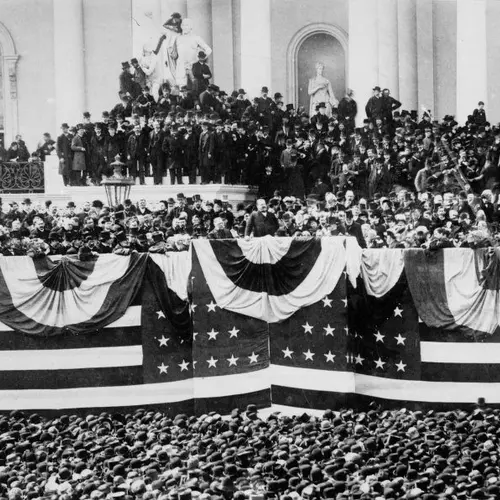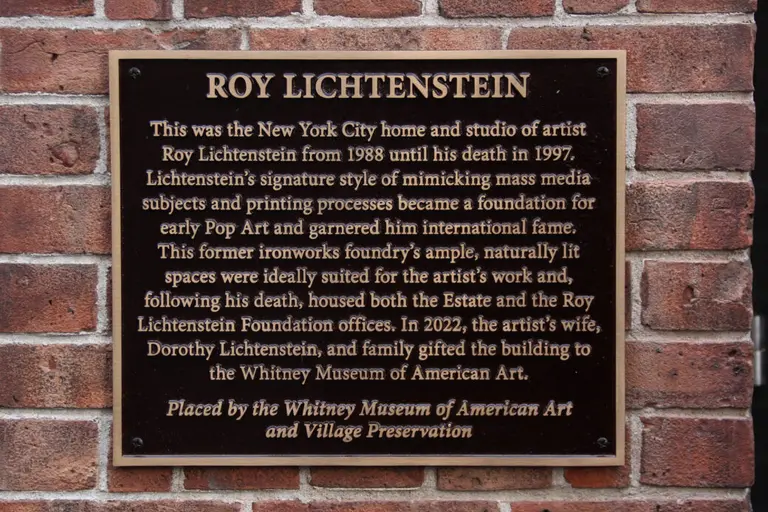The Greenwich Village church that threw a presidential election

The Thirteenth Street Presbyterian Church in 1902, courtesy of the New-York Historical Society, Robert L. Bracklow Photograph Collection
The stately church building at 141-145 West 13th Street in the West Village is the picture of serene elegance. Built in 1846-47 in the Greek Revival style, the classical balance and symmetry of the façade mask a history full of controversy, including the birth of a notorious slur in American politics, which arguably changed the outcome of a pivotal presidential election.
 In 1846, Greenwich Village was steadily transforming from suburban refuge to an extension of New York City. Attached rowhouses were filling up its streets, as were houses of worship to accommodate its expanding population. Three lots on the north side of 13th Street between 6th and 7th Avenues were joined for construction of what was originally known as the Thirteenth Street Presbyterian Church, an offshoot of the old Third Free Presbyterian Church located at Houston and Thompson Streets.
In 1846, Greenwich Village was steadily transforming from suburban refuge to an extension of New York City. Attached rowhouses were filling up its streets, as were houses of worship to accommodate its expanding population. Three lots on the north side of 13th Street between 6th and 7th Avenues were joined for construction of what was originally known as the Thirteenth Street Presbyterian Church, an offshoot of the old Third Free Presbyterian Church located at Houston and Thompson Streets.
In spite of its noble and dignified appearance, the church traveled a rocky path from the beginning. Barely seven years after it opened, it burned down in 1855. It was quickly rebuilt, but by April 1902 it burned down again, both times faithfully recreating the original 1840s design.
In the subsequent years, as immigration changed the neighborhood’s demographics, the church merged with other Presbyterian congregations to remain afloat. By the late 1960s, the church was even sharing its space with a synagogue. But by 1975, the congregation gave up the ghost and disbanded, putting the building up for sale.
 The building today, via Wiki Commons
The building today, via Wiki Commons
One of the two great controversies to engulf the building then followed. A developer purchased the church to turn it into apartments. But the building was located within the newly-designated Greenwich Village Historic District, and the changes necessary to make this elegantly designed ecclesiastical structure suitable for living – such as inserting windows and doors into the intact Greek Revival façade – seemed incompatible with landmark designation. Fervent opposition to the residential conversion plan followed.
But a plan was eventually devised that allowed the redevelopment of the church to pass landmarks muster and move ahead. All windows and doors were inserted only on the sides of the church, where they were scarcely visible, leaving all exterior architectural detailing intact. The church’s wrought iron gate remained. Even its message board– where the schedule of services or Bible quotes would normally appear – is preserved in front on 13th Street, now simply saying “141-143-145” to indicate the addresses of the apartments within. The conversion is so discreet, many assume the building is still a functioning church, and have no idea of the contention which surrounded the change to the building‘s current use.
 An anti-Blaine cartoon presents him as the “tattooed man,” with many indelible scandals, via Wiki Commons
An anti-Blaine cartoon presents him as the “tattooed man,” with many indelible scandals, via Wiki Commons
An even more notorious and consequential controversy which embroiled the church would also be far from apparent to the casual passerby. In the Presidential election year of 1884, the church’s Rev. Dr. Samuel D. Burchard was invited to speak at a gathering in support of Republican Presidential candidate James Blaine. Blaine faced a tough battle against Democrat Grover Cleveland, even though Democrats had not managed to win the White House in nearly three decades. Blaine had been credibly charged with selling favors and political corruption, and the accusation led to a group of Republicans, known as the “Mugwumps,” leaving the party and supporting the Democrat. Cleveland meanwhile faced his own problems, as accounts claimed he fathered a child out of wedlock, leading to taunts by opponents, imitating a crying baby, of “ma, ma, where’s my pa?.”
 An anti-Cleveland cartoon, via Wiki Commons
An anti-Cleveland cartoon, via Wiki Commons
To preachers like Rev. Burchard, Blaine’s sins of selling political influence could not be compared to Cleveland’s alleged transgressions, or what they saw as the greater moral taint the Democratic Party bore. So in his speech before assembled clergymen and the Republican Presidential candidate, Rev. Burchard assailed the Mugwumps for abandoning the Republican candidate, stating that neither he nor any of those gathered that day would ever support the opposing party. In doing so, he memorably and alliteratively labeled the Democrats the party of “Rum, Romanism, and Rebellion,” referring to their opposition to temperance, increasingly large constituency of Roman Catholics, and past support for southern secessionism.
A Democratic mole at the gathering immediately reported these comments to the press. A public firestorm ensued. The increasingly large Catholic vote, fueled by immigration to states like New York, was galvanized against the Republican Blaine for failing to disavow Burchard’s anti-Catholic slur, and for the Democrat Grover Cleveland.
 President Cleveland’s inauguration in 1885, via Wiki Commons
President Cleveland’s inauguration in 1885, via Wiki Commons
The election was one of the closest in U.S. history, with the two main contenders separated in the end by barely a half percentage point. But the outcome was even closer in New York State. There Cleveland eked out a victory of just one-tenth of one percent, or just 1,000 votes. He won the state’s 36 electoral votes, the most of any state at the time, and thereby the electoral college by a vote of 219 to 182. That win in New York State was largely attributable to a surge in Catholic support for Cleveland, as the margin of victory came from immigrant-heavy downstate counties. Predominantly Protestant Upstate New York counties voted overwhelmingly for Blaine.
Cleveland, who was the only U.S. President to serve two non-consecutive terms (he won again in 1892, after winning the popular vote but losing the electoral college to Benjamin Harrison in 1888), was the only Democrat to occupy the White House in the more than half-century from the lead up to the Civil War’s start in 1860, to Woodrow Wilson’s election in 1912. After his victory, Cleveland supporters responded to his opponents’ heckles of “Ma, ma, where’s my pa?” with the triumphant retort “Gone to the White House, ha, ha, ha!”
+++
RELATED:
- The 1864 presidential election and the thwarted plot to burn New York City
- The first presidential inauguration was held in New York City in 1789
- Before the White House: The New York City Homes of U.S. Presidents
This post comes from the Greenwich Village Society for Historic Preservation. Since 1980, GVSHP has been the community’s leading advocate for preserving the cultural and architectural heritage of Greenwich Village, the East Village, and Noho, working to prevent inappropriate development, expand landmark protection, and create programming for adults and children that promotes these neighborhoods’ unique historic features. Read more history pieces on their blog Off the Grid.


































